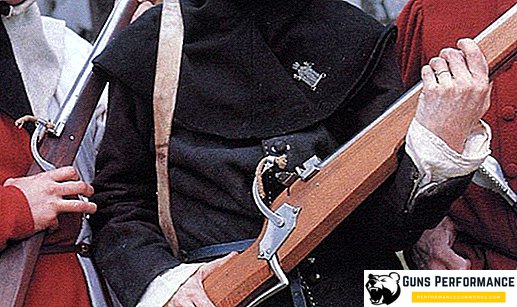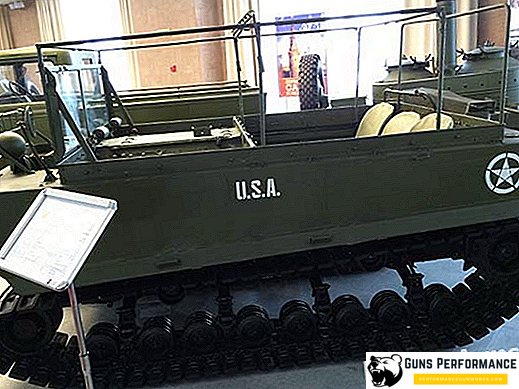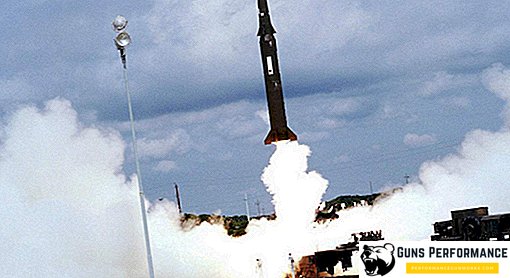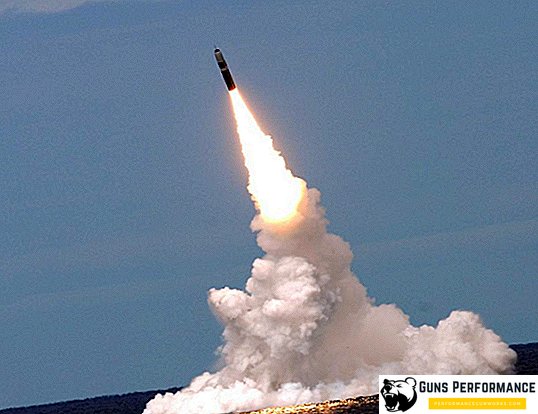The 16th century that followed the Middle Ages was the heyday of firearms. The European wars, swept by the continent, clearly demonstrated the growing power of handgun models. The crossbows were replaced by arquebuses and muskets, which gradually became the dominant means of warfare. Weapons such as an arquebus turned ordinary infantry into a more powerful type of force. From this point on, the "fiery battle" regiments became the main part of the army of that time, and along with the cavalry and the first artillery units they were the main striking force.

Where do the roots of the squeals and the arquebus grow from?
Despite the fact that the arquebus for many is associated with Spanish roots, the term is of German origin. The first samples of this firearm appeared at the end of the 15th century in Germany and were called "hakenbucdse". Literally, this difficult to read word translates as a gun with a hook. Similar weapons appear in almost all countries of the European continent. In Russia, the arquebus came from Poland and from Germany and was called food. They were armed with warriors, which in consequence formed the basis for the rifle regiments.
A later modification of the arquebus, the musket, became the main type of small arms for infantry units. The name, appearance, design of products changed, while the principle of operation of the weapon remained the same. Thanks to the Epoch of the Great Geographical Discoveries, in which the flowering of handguns flourished, the arquebus and the musket reached the Far East. In the armies of the Japanese shoguns, already in the middle of the 16th century, divisions of arcbusers appeared.
Despite the primitiveness of the design of the first combat models, the new weapon was able to show its high firepower on the battlefield. The product was a metal pipe, laid in a wooden box. The barrel of the arquebus was smooth-bore, and the powder charge laid in the breech was ignited by means of a wick. Such weapons were called wick guns. Such a shotgun fired heavy round lead or tin bullets.

The main distinctive feature of the first samples is the imperfection of the product design, which is reflected in a significant weight of the weapon. The infantryman had to carry a rifle weighing about 20 kg on the battlefield, so most often this type of weapon was used for firing from closed positions for defensive purposes. Along with this, trying to make the most effective use of the advantages of firearms, in the armies of European states there is a gradual division of the arquebuse into two types, light and heavy. The first was a manual smooth-bore gun. The second type was considered a serf weapon.
Significantly limited the scope of application of this type of weapon in the field of the absence of a butt. For firing the shooter had to clamp the gun under the armpit. Shooting was carried out only with the stop. German-made weapons for this purpose specifically had a hook, from which the name "gun with hook" came. The infantry version had a smaller size and, accordingly, was used by the regiments of the "firing system" operating in the linear order.

The manufacturing techniques of wick guns for that period were not particularly complex. In comparison with the cost of manufacturing a crossbow, arquebus was easier to manufacture and, accordingly, cheaper. Simple and understandable operation, transportation and storage made this type of weapon common, even considering its imperfect firing characteristics. Arquebus, which first appeared in the arsenal of the German regiments, could shoot at a distance of no more than 100 meters. Each shot required a long preparation. Often crude powder became the cause of the failure of the weapon at the most crucial moment. The crossbow was a far more practical weapon on the battlefield. His heavy arrows flew to a distance of 200 meters, and the shooter could fire almost continuously. Not different new weapons and accuracy. To hit the target from a distance of 100 steps was quite problematic. Accuracy of fire was achieved by creating a high density of fire.
The influence of arquebus on the perfection of combat tactics
Skeptical attitude towards firearms has affected its frequency of use. Effective wick guns were when the situation on the battlefield did not imply intensive action. Changed accordingly and tactics of combat. A dense system of riflemen, armed with arquebuses and muskets and going on the offensive, appeared in the armies a little later. Musketeers set out in several rows fired at volleys. Following the first rank, the fire opened the second line. Next shooting led the third line of shooters. During this time, the arrows of the first rows managed to reload the wick gun and prepare for the next shot. As a rule, shooting from wick guns was conducted at that time with significant interruptions. On average, the interval between the first two volleys was 3-5 minutes, so the main trump card on the battlefield at that time was the accuracy of the first salvo.

The main effect was achieved after the first salvo. The accuracy of the shot at first did not play a key role. The roar and smoke caused panic on the other side. Militia units and horses often did not withstand the psychological stress of such an attack. A little later, when the accuracy of shooting increased, the arquebus in the hands of an experienced shooter becomes a terrible and powerful weapon. The first volley was able not only to remove the enemy infantry ranks from the battlefield, but also to stop the enemy cavalry rushing at full speed.

The action of the wick gun did not have a high penetrating ability. A bullet fired from a smooth-bore weapon could not always pierce the steel armor of the riders. However, the force of the blow was such that the rider could simply be knocked out of the saddle. The actions of arquebusers on the battlefield at that time were regarded by noble and noble knights as a crime. Here, an analogy can be traced with the opposition of the heavily armed knightly cavalry to the massive use of archers during battle.
The first massive use of Arquebus and its analogues, wick guns, is attributed to the Hungarian King Matthias Corvin, who managed to equip his troops with new models of firearms. Then the arquebus starts its triumphal march across the European continent. The Burgundian and Italian wars of the end of the XV beginning of the XVI century marked the beginning of a new stage in equipping armies. The era of firearms has come, without whose participation no battle or battle has ever been completed. The battle of Pavia in 1525 marked the beginning of the mass spread of the arquebus and musket in the armies of other countries.
Modernization of the arquebus design
After long throwings and attempts to improve the weapon, a light version of the weapon appears. Instead of the usual wick, which often gave the shooters a lot of trouble, the arquebus had a wick lock. The usual wick string was attached to serpentine, the presence of which accelerated the ignition of gunpowder in the breech breech. On combat copies, a prototype of the butt appears, due to which the accuracy of firing is significantly increased. The barrel of the gun becomes more perfect. The transition from stone shells to metal bullets ends. A bullet weighing 30-50 grams now could not only knock an arm-strap down, but also penetrate metal armor.

Bullets, as well as gunpowder, began to be stored in special bags, in pouches. The arquebuser's equipment consisted of a powder flask (pouch) for seeding powder and a large powder flask in which the charging powder was stored. Complementing the combat equipment arrow pair of wick cord meters. In addition to the arquebus, the riflemen had a sword or rapier. However, these units could not act independently on the battlefield. A prerequisite for the effective use of the regiments of the "fiery system" was the escort of their troops pikemen and spearmen.
Arquebus becomes easier over time. There are samples of weapons, specially created for equestrian units. So in the arsenal of the French cavalry appear copies of a length of not more than one meter. The weight of such a gun is 5-7 kg. In the middle of the XVI century, the final separation of wick guns into arquebuses and muskets occurs. The first includes all small-bore smooth-bore guns. Muskets, on the contrary, represent a heavy type of firearms, in which the main is a large caliber. Arquebusers were able to fire from their hands, musketeers were able to open fire only from a special stop. It could be a fry or a berdysh, like archers in the Russian army.

Being a weapon that can be called the progenitor of a gun, the arquebus had an average length of 50 calibers. Equipped with wick locks, and a little later with wheel locks, these samples of firearms became a transitional type. The perfection of technology, the emergence of new tactical techniques led to the fact that a new type of weapon, a smooth-bore gun, began to form on the basis of an arquebus and muskets.
Instead of wicks appears silicon lock. The caliber of the weapon is reduced, and the barrel is extended. Accordingly, the range of direct shot and accuracy increases. The unitary paper cartridge makes the shooter's actions on the battlefield as efficient and productive as possible. Two more centuries the arquebus was considered the main weapon of destruction on the battlefield. The transition to trigger guns and pistols led to the fact that the wick gun gradually went down in history. On the battlefield, the shooters needed a quick reaction, and there was an increased demand for the density and accuracy of fire. Old systems did not meet the new requirements and quickly went down in history.












